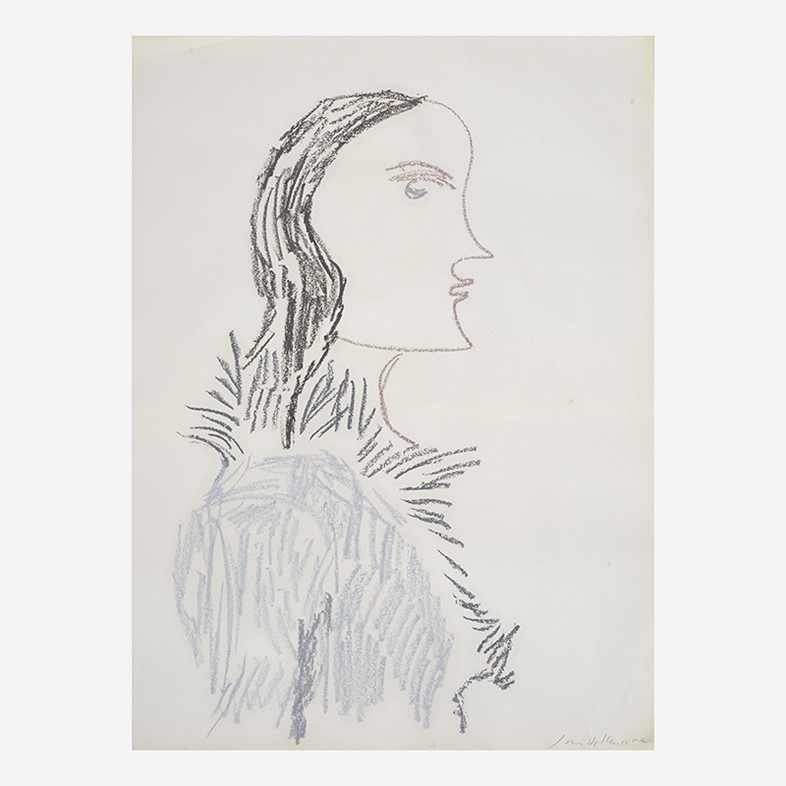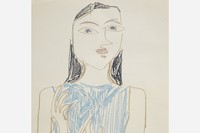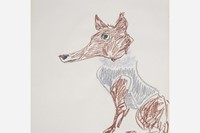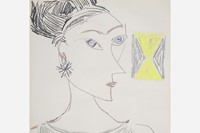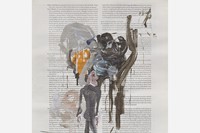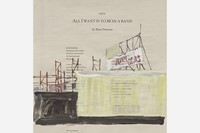As his new exhibition inspired by Brooklyn's cultural landscape opens in New York, we catch up with celebrated painter and fashion illustrator Jean-Philippe Delhomme
Since the late 80s, the fashion illustrations of esteemed Paris-based artist Jean-Philippe Delhomme have frequented the pages of Interview, The New Yorker, Vogue Paris, W Magazine and many other prestigious publications. He has written and illustrated several books, and created ads for a diverse range of clients, from Sotheby's to Maison Kitsuné. A cultural flaneur, Delhomme observes and documents the eccentric characters that pepper the art, design and fashion worlds and the places they frequent. His style is loose and sponaneous, gently satirical, and at times a little goading, but ultimately embracing of the subjects he captures.
"A cultural flaneur, Delhomme observes and documents the eccentric characters that pepper the art, design and fashion worlds"
His latest exhibition, From Late Modern to Used Cars, opened yesterday at Wright New York and showcases two previously unseen series of work, both created in the artist's Brooklyn studio. The first, entitled the Brooklyn Rail paintings, was inspired by the magazine upon whose pages Delhomme painted the works. Delhomme explains, "The Brooklyn Rail is a free art magazine – I used to pick up copies at the arts supply store or at the coffee shop in Bushwick. I was attracted by the intellectual vibe of the magazine: the poems, art reviews. What fascinated me the most was the translation of Raoul Vanegem’s The Revolution of Everyday Life which is one of the texts that inspired the Situationists. I never could read the Situationists, but I loved being confronted by this 60’s piece of intellectualism and revolution in Bushwick. I started painting on the magazine pages, choosing the ones whose titles echoed my thoughts at that moment. It was very spontaneous, like poetic associations of ideas, or a journal nourished by the things and landscapes I had seen in the neighbourhood during the day."
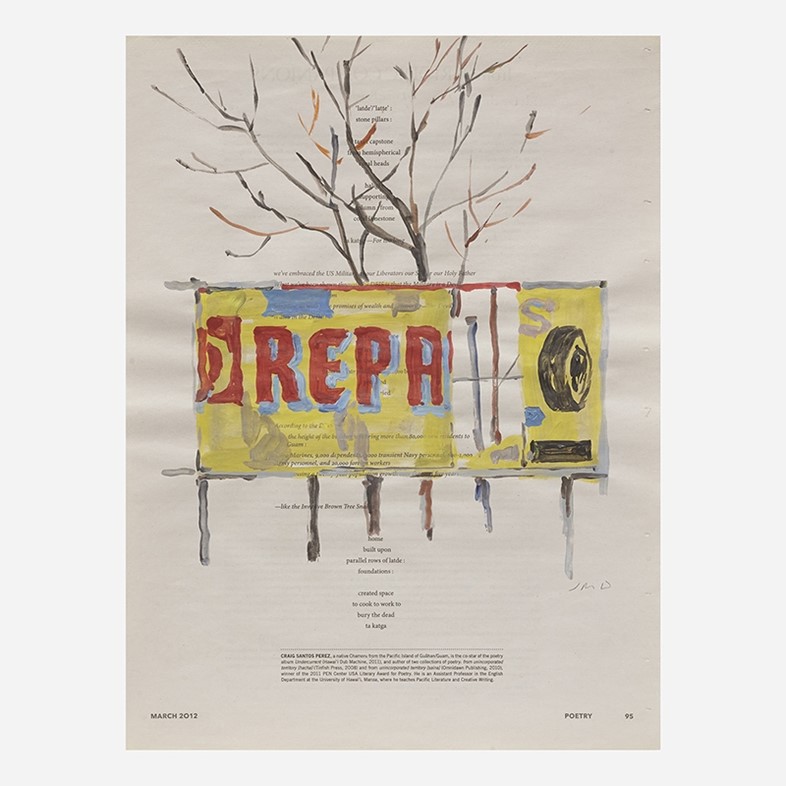
The second series, The Visitors – comprising large pastel drawings on paper – is equally romantic in notion. "One day a friend who was sharing my studio gave me a stock of old paper, which by being altered had a plastic quality. I started drawing large portraits, imaginary figures, which I like to think of as the visitors of an Upper East side collector apartment, people you’d see at an auction of Late Modern art. They have the sort of elegance which escapes "fashion", and you’d know they would have a Picasso at home." Here we catch up with Delhomme to find out more about his inspirations and love of Brooklyn.
Why From Late Modern to Used Cars?
It's a way of linking the imaginary guests of a Guggenheim party in the 60s to nowadays Bushwick body shops.
What particularly fascinates you about Brooklyn and its people?
There is a particular energy in this neighbourhood of Bushwick. All the artists are eager to achieve something, the looks and styles, it’s funny to be in a line mainly composed of artists waiting for sandwiches at the more or less organic supermarket. And in the meantime, the remains of the industrial activity, the long haul trucks parked at night in the street, the metal scrap, the cranes, the old railroad tracks in between the warehouses, and in the foreground the glittering skyline of Manhattan. There is a certain sense of freedom and nature – the vast sky, the weeds and trees growing along the fences – which I enjoy very much.
What do you hope people will take away from the exhibition?
I hope they will see works different from what they know if they're familiar with my illustrations.
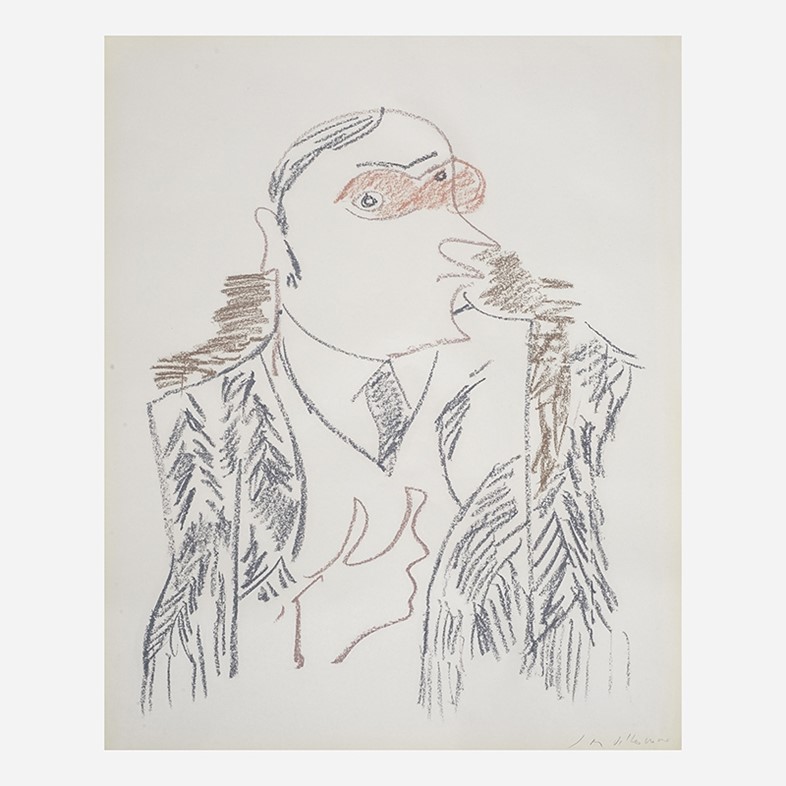
What in your mind makes for an interesting subject?
I'm as much inspired by social and cultured subjects as by landscapes and light. A street corner garage is as much inspiring to me as an opening with incredible faces and looks. All the repair garages have been closing in the neighbourhood to be replaced by artists spaces, slick bars and restaurant, but visually, it was hard to surpass a Cadillac Escalade having the front replace with the whole engine on the sidewalk, or a 70s car body being restored and painted. These were the most striking installations and best sculptures to be found on the sidewalk by a sunny day.
What makes a good painting or drawing?
One that brings a sense of adequacy to an untold purpose.
How would you describe your aesthetic?
I’m not trying to have an aesthetic, and in fact work in different ways and mediums. I sometimes like to use words and images to portrait social scenes (like in my book “The Cultured Life”, or “The Unknown Hipster Diaries”) and sometimes it’s about observing and painting a landscape or somebody sitting for a portrait. If one thing would unite them, it could be a certain sense of lightness that I’m trying to keep in the way I paint or draw.
What or who would you describe as your key inspirations?
From writers to painters, the key is to keep a flow of inspiration and be receptive, seeing things that keep you alert with the desire to do the next painting, and the more you’re in that state, the more subjects you see.
From Late Modern to Used Cars is at Wright until August 23.
